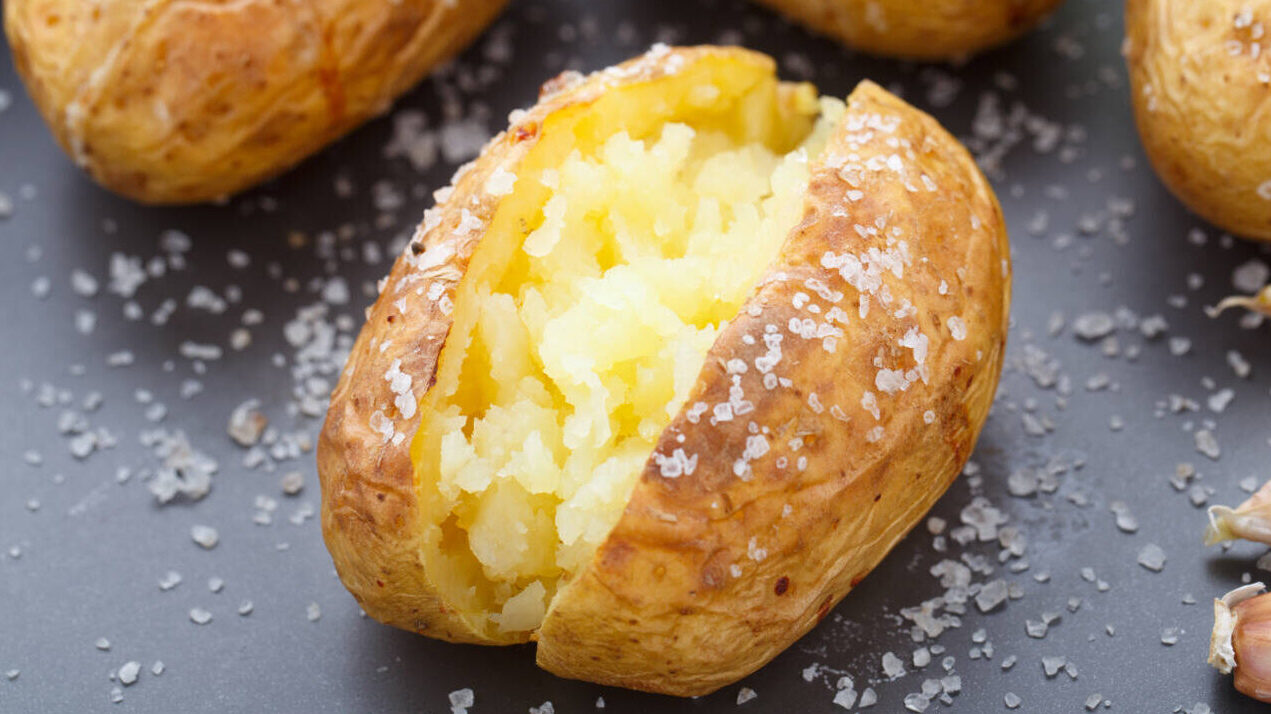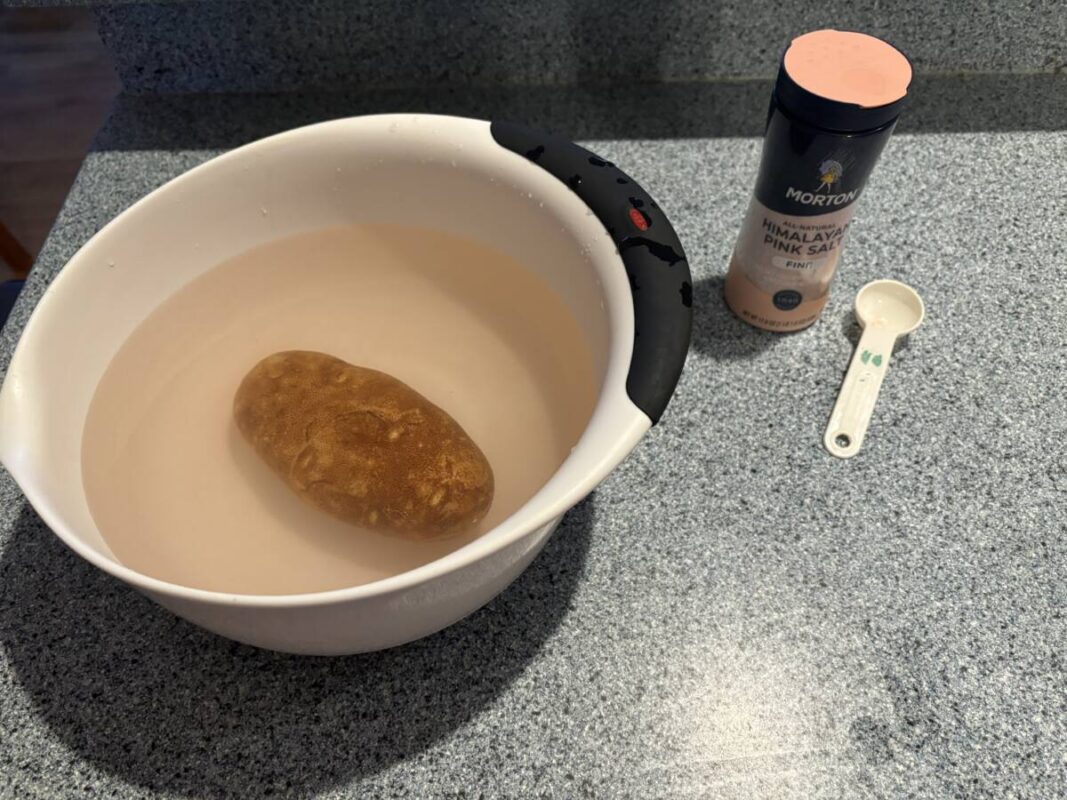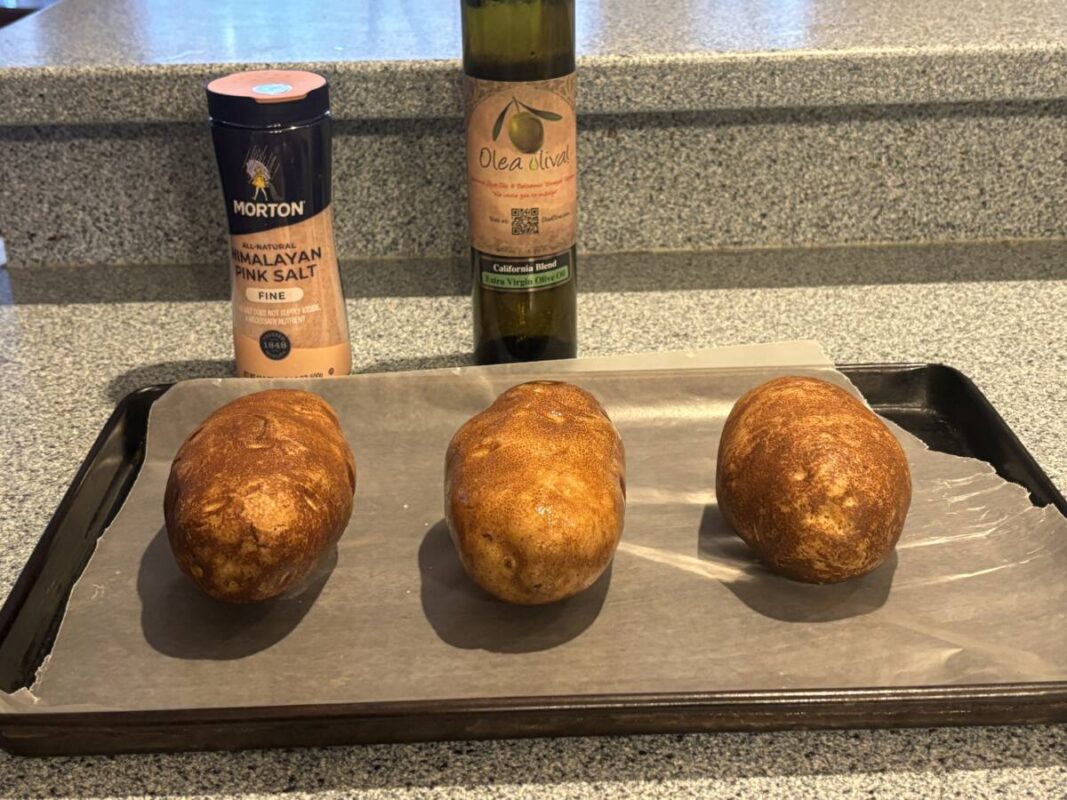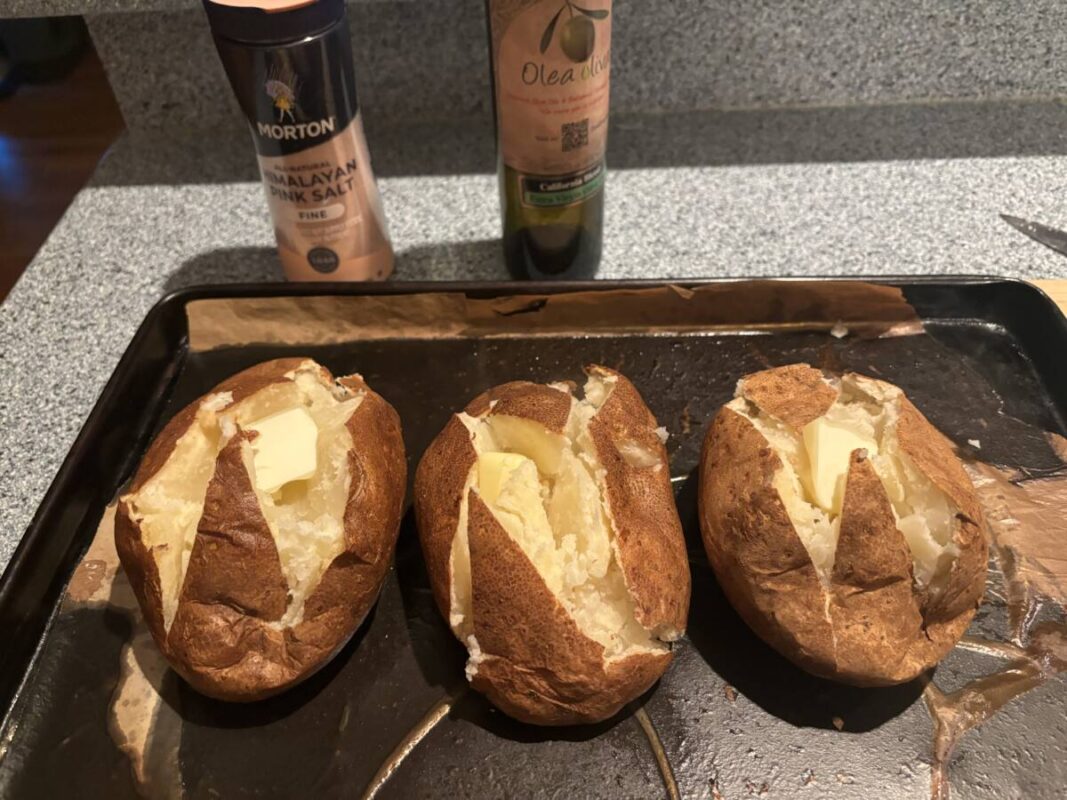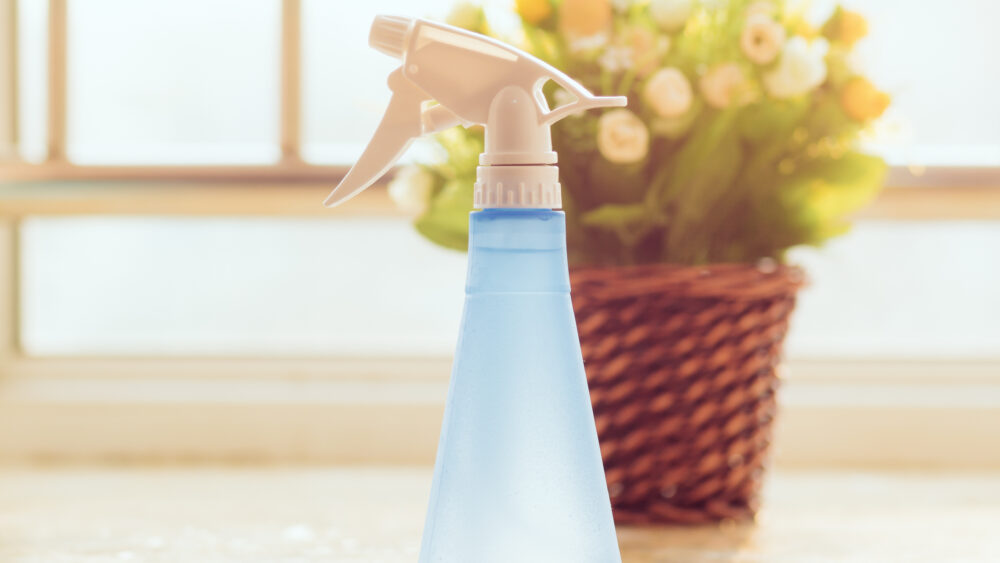This pantry staple is the secret to making perfect baked potatoes
For a busy dinner prepper like me, baked potatoes are one of the easiest side dishes around. All I do is wash them off, stab them with a fork, sprinkle on some salt and slide them into a hot oven. That gives me an hour to concentrate on the trickier meal components — like the steak marinade, the caramelized onions or the steamed vegetables.
But I recently found out that adding just one simple step to my process can really upgrade the flavor and texture of the baked potato.
The trick, which comes from America’s Test Kitchen, is simply this: Submerge the potatoes in highly salted water before putting them in the oven. This salty brine then evaporates during the baking process, leaving a potato skin that’s evenly spiced all the way around.
This method was easy enough to try (who doesn’t have salt in their pantry?), so I conducted an experiment to see how well it worked. First, I planned a meal of turkey meatloaf and creamed corn that would pair well with my baked potatoes.
Then, I baked three russet potatoes (the best potatoes for baking), each in a slightly different way. Besides the salty brine method for the first potato, I also rubbed a second potato in olive oil. And for the third, I did my usual fork-some-holes and shake-some-salt routine.
My Baked Potato Experiment
Here’s exactly how I prepared the baked potatoes portion of my dinner, using the trick from America’s Test Kitchen.
After preheating my oven to 450 degrees Fahrenheit, I washed and pricked the potatoes.
In a large bowl, I made a salty brine solution by adding water and salt in the ratio of a 1/2 cup of hot water per 2 tablespoons of salt. I whisked the salt into the water until it was completely dissolved. Then, I dropped the first potato into the solution for a few seconds.
For the second potato, I brushed on some olive oil. For the third potato, I simply shook some salt on it. Next, I placed all three potatoes in the oven. Here’s how they looked on the way in:
After 50 minutes, I removed the first, brine-salted potato, brushed it with olive oil and returned it to the oven for the final 10 minutes of baking.
After one hour, I removed the potatoes and scored them immediately (cut two slits in the shape of an X). This gives the steam a chance to escape, which leads to an airier, fluffier potato.
Here’s how the three potatoes looked when I took them out of the oven:
Then I called my husband and teen daughter into the kitchen to try all three potatoes (with a slab of butter in each). With no hints from me, they both found potato No. 1 (the salty brine one) to be the winner!
They explained that they could taste the salt on the skin, but it wasn’t overpowering — and the potato itself was fluffy and “just right.”
As for potato No. 2 (which went into the oven brushed with olive oil from the start), the skin was a bit tough.
They said potato No. 3 tasted like “nothing special.”
When I served the turkey meatloaf dinner, I split potato No. 1 three ways, so we could all eat part of the winner. Potatoes No. 2 and No. 3 were sadly left behind. Lesson learned!
In my future baked potato endeavors, I will definitely incorporate this easy, submerge-in-salty-water trick. I also learned that I should really get myself a food thermometer. The America’s Test Kitchen recipe recommended that I remove the potatoes when the largest one reached 205 degrees Fahrenheit. Without a thermometer, I had to guess.
A probe thermometer will help you make baking your potatoes to the perfect temperature even easier.


